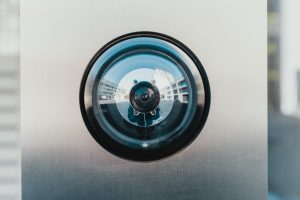Arizona’s Court makes nearly all criminal hearings “Non-Appearance.”
Three weeks after Arizona Gov. Doug Ducey declared a state of emergency, the state has registered over 1000 confirmed cases of COVID-19, and 24 fatalities. While tackling the myriad issues presented by the global pandemic we are facing, the courts have made unprecedented changes to legal procedures, especially in criminal cases.
Arizona courts are hardly alone in making monumental changes to the judicial process in light of the present need for social distancing in all aspects of daily life around the globe. Courts throughout the United States, from New York to California, have instituted policies that limit the need for human interaction in the courtroom and have many hearings conducted telephonically or via video conference.
While courts are now instituting these changes as emergency measures to stop the spread of deadly contagion, they could serve as a foundation for bringing the legal system up to speed with the technological advances in telecommunication that we have witnessed in the past decades.
An example of this can be seen in the courts in my home jurisdiction of Maricopa County, Arizona. In response to a State Supreme Court order to implement social distancing policies in response to the COVID-19 pandemic, the Maricopa County Superior Court issued sweeping new guidelines that modified appearance policies for criminal hearings.
These policies drastically reduce the need for in-person appearances in Superior Court. All but the most important criminal hearings have been designated as “non-appearance hearings,” meaning that most hearings will now be conducted virtually or by motion.
Instead of appearing in person, the attorneys involved in “non-appearance hearings” have been ordered to file written statements to the Court. A party may ask the Court to convert the non-appearance hearing to an appearance hearing, but the lawyer seeking the order must provide the Court with a valid reason for doing so, and it is within the judge’s discretion to decide whether to grant the motion or not.
Only the final hearing prior to trial requires a telephonic or virtual appearance by the parties in the courtroom.
Short-Term Solution or Long-Term Alternative?
In Arizona, at least so far, these measures have been working well. They address the need for social distancing without interfering with the efficient administration of justice.
The Maricopa County Superior Court reports that its in-person attendance dropped by 40 percent last week. A number of deputy county attorneys have told me that things are going smoothly from the State’s standpoint.
Compare this to the perennial overhauls to the rules of criminal and civil procedures that lawyers often witness. Such overhauls are hardly ever as far-reaching as the ones instituted last week; yet they are always preceded by months of discussion and continuing legal education seminars to prepare practitioners for the relatively minor shifts in procedure.
The fact that a large segment of the courts have adapted so quickly to the changes imposed in response to the novel coronavirus should be commended. It’s a testament to the resilience of the legal profession, despite the common perception that lawyers are slow to respond to change.

As a defense attorney, I haven’t seen any adverse effects on my ability to represent clients. I often thought that the numerous status conferences that took place in the courtroom before trial could just as easily be accomplished remotely anyway.
The mornings I spent attending court hearings normally consisted of multiple hours of logistics and waiting—between going down to the courthouse, checking in, and waiting in line for my case to be called. All of this, so that I could spend a couple of minutes having a substantive conversation with the judge or prosecutor about my case.
The forced telecommuting that we are now experiencing, therefore, seems to represent an actual increase in efficiency. Whereas an in-person appearance on average might take three hours of my time, a telephonic appearance that performs the same function may now only take me 30 minutes or less.
Ultimately, when the COVID-19 crisis has been resolved and things in the court system go back to business-as-usual, it may be interesting to see whether the courts and practitioners will see any long-term potential to some of the emergency procedures being implemented now.
After getting a taste for more expansive telecommuting, the legal system might be loath to abandon some of the efficiency of the new methods, once the crisis that precipitated them has passed.


Join the conversation!